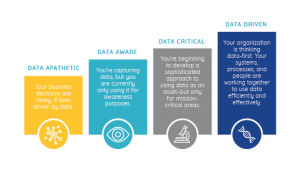Welcome back to our series, Positioning Your Company for the Future of Healthcare. Over the past several weeks, we’ve been walking you through the current state of healthcare and the concrete actions you can take to position your organization for success in an evolving landscape. Today we focus on using data to improve meaningful patient outcomes to drive your organization.
If you missed the previous posts feel free to jump to them here: Intro, Part 1, Part 2.
Now that your systems, processes, and culture are in place to support holistic health and recovery, it’s time to look at the actual patient outcomes. The primary goal of almost all healthcare organizations is to improve their patient’s health. But if you asked many to prove, with discrete data, that they are doing this consistently they could not do it. This leaves organizations in a very difficult position based on the quality-driven initiatives on the horizon. Without accurate data, it will be difficult to prove that a client’s health is improving based on services that payers consider cost effective.
Another place this will be important is within the trend toward socialized medicine. This isn’t socialized medicine in the sense of universal healthcare, but the trend toward more public assessments of healthcare organizations and their providers. Much like we do with restaurants today, consumers of healthcare are beginning to research online for organizations that have the best outcomes, customer satisfaction scores, and “five-star reviews.” For organizations that are truly recovery based, and can show it with their data, there is a great opportunity to market success to potential partners, payers, and clients throughout their communities.
Operationalizing this process is a continuation on the work that was completed in Step 2 of our series. In Step 2, systems and workflows were implemented to manage clients and their whole health. In this phase, it’s time to use the data that results from those systems to become fully data-driven. Data-driven organizations use data to make decisions to improve their clinical services and operational efficiency. Data becomes an integral part of the culture and decision making of the organization, and if done well everyone from supp ort staff to the board benefit.
ort staff to the board benefit.
The easiest way to create a plan for proving your success is to start from the end outcome that you want to achieve, and then work backward. In this case, you want to prove that your client’s outcomes are improving because of your treatment modalities and staff. To monitor these patient outcomes and services over time you will need detailed reports and dashboards. To create these outputs you will need to consistently capture discrete data on the different elements that you want to measure. This will likely mean that your initiative starts by adding forms and fields into your EHR that capture pertinent clinical outcome data at distinct time intervals. You’ll also need to define and monitor workflows that ensure that your staff is consistently capturing this information for your client population. This simple progression highlights the thought process that can be used to begin identifying the forms, workflows, and outputs that need to be in place to support each different part of your project.
Now keep in mind, having the data is only half the battle. A frequently overlooked step in the process of becoming a data-driven organization is setting up the roles and workflows that will be necessary to act on the data once it’s available. For example, if you find that your data doesn’t show any consistent progress on clinical outcomes, what is the response? Is it anger, frustration? Or is it action? It may be both, but there must be a mechanism put in place to understand why certain data isn’t living up to your standards and then to take concrete steps to fix it quickly.
Stay tuned for our next post, in which we introduce the final step in a roadmap that guides organizations to position themselves well for the future of healthcare. It’s not an easy path, but it is necessary to remain viable in an environment of extreme consolidation and competition around clients and revenue.
Want to keep reading? Click here to read the final piece of the series: Part IV – Securing Your Systems.
All Thought Leadership